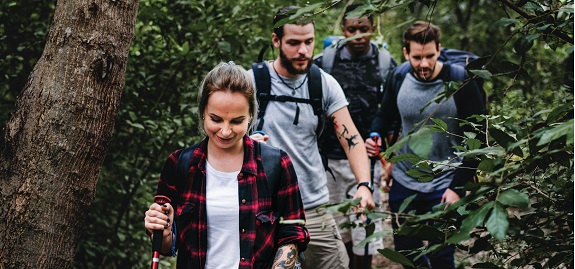Community and Conservation

Protecting Nyakweri Forest.
The Nyakweri Forest is the largest forest in Southwest-Kenya and is incredibly significant for biodiversity. The forest is severely threatened due to illegal logging, clearing for crop production, and charcoal burning. Deforestation in Nyakweri has significantly increased human-wildlife conflict as animals are pushed from their natural habitats. Nyakweri forest contains rare species of trees like the African Green Heart and is a refuge for elephants giving birth and other herbivores and carnivores and deforestation will have serious ecological and diversity consequences. We are currently using a multidisciplinary approach, such as interviews, focus group discussions, and action research with restorative social enterprises, to investigate the dynamics of this environmental degradation, and explore how it can be reversed.
Over the last two years, a team of SGW led by Aaron Onserio has interacted with Nyakweri community women and youths, who have a keen interest in community-based conservation of Nyakweri forest. During previous work in Mara North conservancy we also observed that water levels in River Mara were diminishing due to the drying of some tributaries coming from Nyakweri. These experiences triggered a quest to understand the importance of Nyakweri forest and why its conservation is not yet prioritized by the people and authorities. Human encroachment and conversion for crop production is one major driver of degradation of Nyakweri, and conservations with local people indicated a lack of awareness about their activities’ impact on the resource.
Nyakweri has not had much focus of research and yet it constitutes an important component of land scape across Kenya. We are mapping Nyakweri forest to understand the land-use and the roles humans play in conserving or destroying the forest. Communities’ awareness and sensitization are being strengthened by our community outreach programmes and public education to help the community understand how to co-exist with the forest and therefore help to protect Nyakweri forest from extinction. We developed this project to bring a clear understanding that human-forest interaction does not have to be negative, but it can improve the livelihoods of all groups involved and thus promoting co-existence. This project is geared towards the statement in Kenya “cut one tree plant two”!
Major activities SGW is carrying out in Nyakweri Forest include
Tree nurseries and tree planting
Tree nurseries have been established in the primary schools around the Nyakweri forest. Areas denuded in the forest have been identified and soon will start planting trees. In collaboration with the school administration, each pupil at the school has adopt a number of seedlings to take care of for at least two years.
Beehive experiments
10 Double layer Langstroth standard hive B-7L (8 frames) have been distributed to community members living in/around Nyakweri edges. Langstroth hive is the modern beehive that has a high standard and produce high yield of honey. The bottom box is used for bees living, queen and raising their young ones and the upper box is used to make honey. For technical support, we have teamed up with a team of beekeeping experts from Kenya Agricultural and Livestock Research Organization (KALRO) to educate and train the community on how to operate and harvest honey from Langstroth hive.
Use of briquetting machines to make charcoal briquettes
We are currently training women and youths of Nyakweri community on how to make charcoal briquettes. We are using locally available materials such as waste biomass, sawdust, waste papers and red soil as a coal binder to make charcoal briquettes. After the Briquettes have dried on the sun, they are used locally by members or sold to generate income to supplement other needs.
